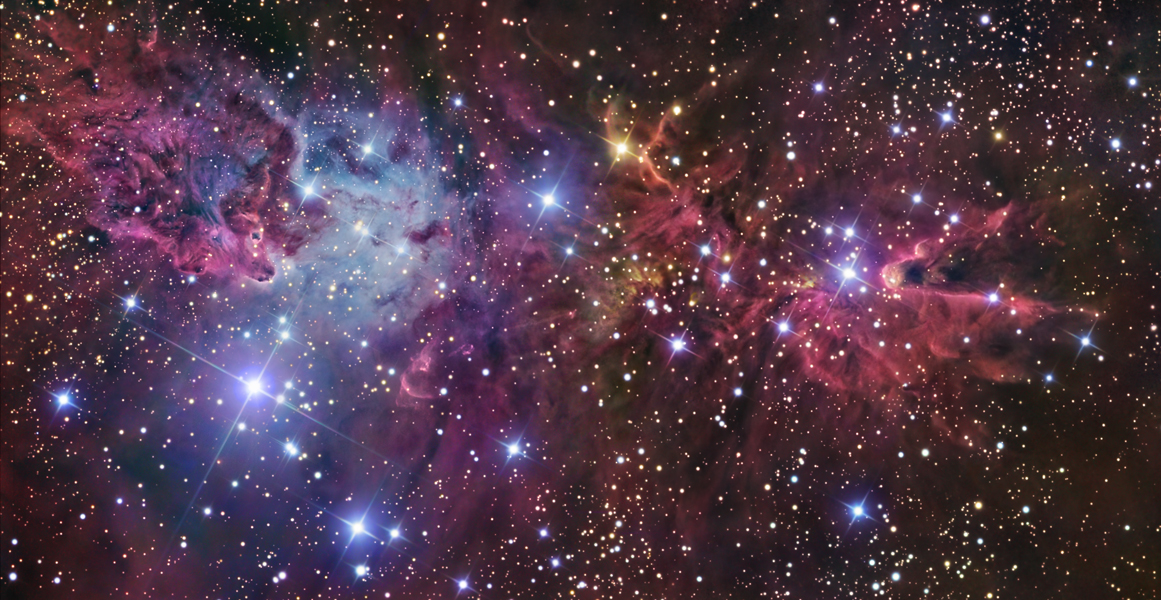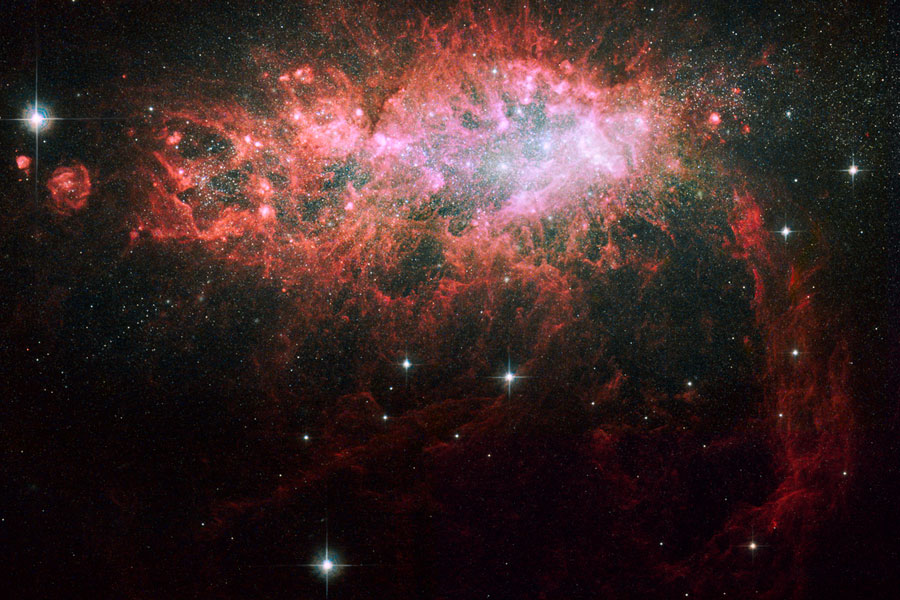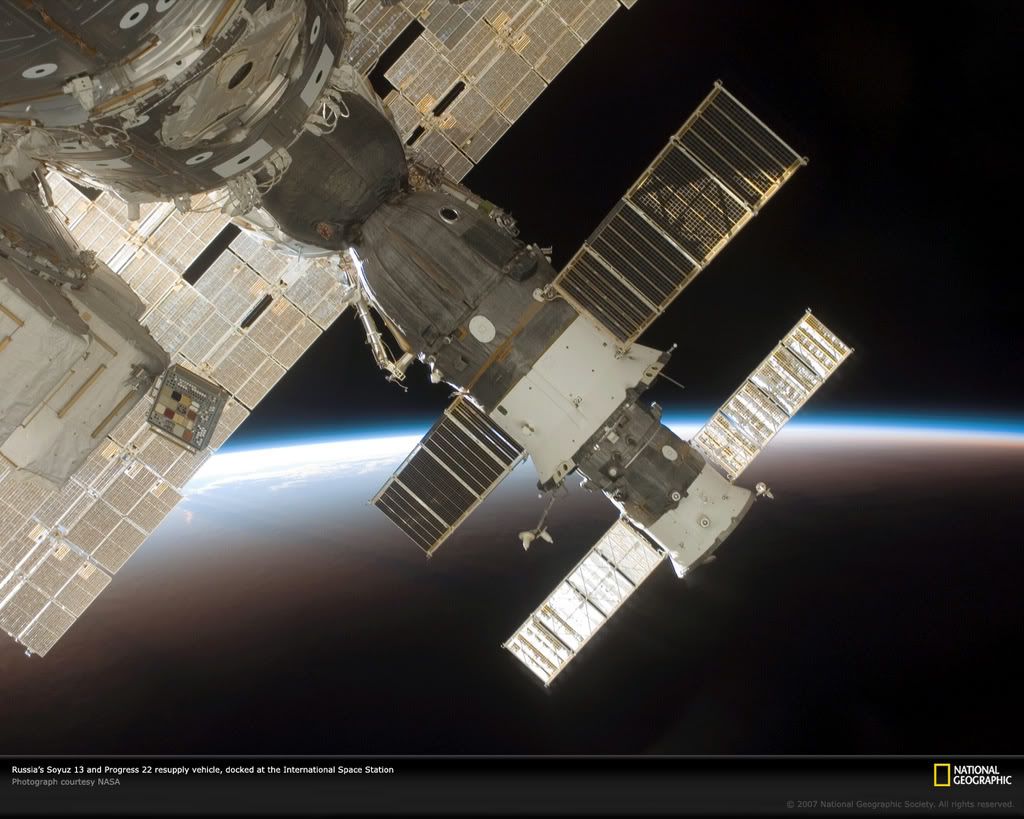-
Hey Guest. Check out your NeoGAF Wrapped 2025 results here!
You are using an out of date browser. It may not display this or other websites correctly.
You should upgrade or use an alternative browser.
You should upgrade or use an alternative browser.
Space: The Final Frontier
- Thread starter Windu
- Start date
When I did tours at the observatory, I liked to give people a timeline on our Sun. It was always so weird to see people react in horror when I told them that it would eventually engulf the Earth in 5 billion years.GaimeGuy said:
Which is why we need to look at space exploration: it's guaranteed that the earth will be engulfed by the sun in ~5 billion years, and will be incapable of supporting life in a fraction of that time.fallout said:When I did tours at the observatory, I liked to give people a timeline on our Sun. It was always so weird to see people react in horror when I told them that it would eventually engulf the Earth in 5 billion years.
Sure, it's a long way off, but might as well start planning now! :lol
DrForester
Kills Photobucket
New Cassini photo of Saturn's Enceladus

Full size.
http://s3.amazonaws.com/ciclops_ir_...516977&Signature=ZV+lna/qwUtaJ6ftCJTWUCAv06s=

Full size.
http://s3.amazonaws.com/ciclops_ir_...516977&Signature=ZV+lna/qwUtaJ6ftCJTWUCAv06s=
kkaabboomm
Member
this may not be OF space, but it deals with how America currently gets to and from space

http://gizmodo.com/5112331/stunning-zenithal-shot-of-space-shuttle-flying-on-top-of-747

http://gizmodo.com/5112331/stunning-zenithal-shot-of-space-shuttle-flying-on-top-of-747
DrForester said:New Cassini photo of Saturn's Enceladus

Full size.
http://s3.amazonaws.com/ciclops_ir_...516977&Signature=ZV+lna/qwUtaJ6ftCJTWUCAv06s=
My god that looks awesome...
kkaabboomm said:this may not be OF space, but it deals with how America currently gets to and from space
http://gizmodo.com/5112331/stunning-zenithal-shot-of-space-shuttle-flying-on-top-of-747
NASA channel was showing a video of that live, I believe. I think it was live anyhow. I just happened to glance at the TV the other day and there it was, sitting on top of the plane as it flew along.
DrForester said:New Cassini photo of Saturn's Enceladus

Full size.
http://s3.amazonaws.com/ciclops_ir_...516977&Signature=ZV+lna/qwUtaJ6ftCJTWUCAv06s=
Error on the full size pic. =*(
DrForester
Kills Photobucket
glistenm said:Error on the full size pic. =*(
Try this.
http://ciclops.org/view/5310/A_Tectonic_Feast?js=1
GaimeGuy said:
Is this accurate? I know aout the sun stuff, but the whole continental shift thing is really awesome
DrForester said:New Cassini photo of Saturn's Enceladus

Full size.
http://s3.amazonaws.com/ciclops_ir_...516977&Signature=ZV+lna/qwUtaJ6ftCJTWUCAv06s=
My. Fucking. God.
And this is only in our galaxy! Just our little fucking microscopic slice of the galaxy! And it's "just" a MOON!
To live forever, and see it all
DarkJediKnight
Member
I don't want to age. I really don't. Oh! What I'd do to live 300 years from now.
DarkJediKnight said:I don't want to age. I really don't. Oh! What I'd do to live 300 years from now.
I would do terrible, horrible things to live 300 years. I would sell a slice of my "soul", whatever that is, to be able to live even an extra 100 years!
Amir0x said:I would do terrible, horrible things to live 300 years. I would sell a slice of my "soul", whatever that is, to be able to live even an extra 100 years!
Damnit humanity, why do you have to have such a shitty average lifespan...
comedy bomb
Banned
Hootie said:Gives you some perspective on how insignificant we are. Just think, that's a fraction of a fraction of the entire galaxy, and there are billions more galaxies.
I wouldn't say we are insignificant. We still don't know if life is the exception or the rule. I'd say a planet full of billions of different plants and animals has to have some universal worth.
DarkJediKnight
Member
comedy bomb said:I wouldn't say we are insignificant. We still don't know if life is the exception or the rule. I'd say a planet full of billions of different plants and animals has to have some universal worth.
The 4'2 people on Gliese 581C are probably wondering whether that dark little planet 20 light years away looks like it may hold life.
http://www.mpg.de/english/illustrat...tion/pressReleases/2008/pressRelease20081218/
"We thought of using a foreground galaxy like a cosmic magnifying glass to observe at a far greater distance"
I was at a meeting recently and an HR idiot actually started talking about thinking outside the box.
THIS IS THINKING OUTSIDE THE BOX!
It has taken the microwaves 11.1 billion years to reach us. Fuck.
"We thought of using a foreground galaxy like a cosmic magnifying glass to observe at a far greater distance"
I was at a meeting recently and an HR idiot actually started talking about thinking outside the box.
THIS IS THINKING OUTSIDE THE BOX!
It has taken the microwaves 11.1 billion years to reach us. Fuck.
More from www.boston.com/bigpicture

edit - This might have been posted here, oh well...

This sequence of 12 frames was taken by NASA's Cassini spacecraft over a span of about 45 minutes on March 12, 2008. In that brief time, Cassini covered almost 40,000 kilometers in its approach to a flyby encounter with Enceladus, one of the moons of Saturn. The overexposure and smearing of the images gives a hint of the raw speed involved - 14.4 km/sec (or 32,211 mph). Shortly after this sequence, at its closest, Cassini approached within 52 km (32.3 miles) of the surface of Enceladus.
edit - This might have been posted here, oh well...
GaimeGuy said:
Would be incredible to see the view of the Andromeda galaxy i +2.9 billion years.
I'd probably die of being amazed on the spot (that and the space spiders that no doubt crawl around Earth)

25 February 2007
This stunning view, showing portions of the Rosetta spacecraft with Mars in the background, was taken by the Rosetta Lander Imaging System (CIVA) on board Rosetta’s Philae lander just four minutes before the spacecraft reached closest approach to the Red Planet earlier this morning.
High res version
Don't know if it has been posted, but this is one of my favorite space images. Like you're in a spaceship coming into orbit around Mars.
It's funny how important perspective is when looking at space images. One of my favourite views of Saturn is under low magnification. You can see this well-defined gas giant, with its superb rings, surrounded by a field of stars.Verdre said:Don't know if it has been posted, but this is one of my favorite space images. Like you're in a spaceship coming into orbit around Mars.
Vinzer Deling
Banned
sucks I'll be dead before I can take my dinosaur car to Venus and door a smokey burn out.
DarkJediKnight
Member
This is the most comprehensive paper on WARP DRIVES
Published about a year ago and basically outlines the possibility of it working by moving away from general theories of relativity instead by means of Quantum field theory. Interesting read.
They even have a formula for the ultimate speed limit, which allows one to cross from one end of the known universe to the other in roughly 11 seconds. (This is even harder to swallow than the Warp Drive itself).
Published about a year ago and basically outlines the possibility of it working by moving away from general theories of relativity instead by means of Quantum field theory. Interesting read.
They even have a formula for the ultimate speed limit, which allows one to cross from one end of the known universe to the other in roughly 11 seconds. (This is even harder to swallow than the Warp Drive itself).
AndersTheSwede
Member
Click For Bigger Image


Clouds of glowing hydrogen gas fill this colorful skyscape in the faint but fanciful constellation Monoceros, the Unicorn. A star forming region cataloged as NGC 2264, the complex jumble of cosmic gas and dust is about 2,700 light-years distant and mixes reddish emission nebulae excited by energetic light from newborn stars with dark interstellar dust clouds. Where the otherwise obscuring dust clouds lie close to the hot, young stars they also reflect starlight, forming blue reflection nebulae. The wide mosaic spans about 3/4 degree or nearly 1.5 full moons, covering 40 light-years at the distance of NGC 2264. Its cast of cosmic characters includes the the Fox Fur Nebula, whose convoluted pelt lies at the upper left, bright variable star S Mon immersed in the blue-tinted haze just below the Fox Fur, and the Cone Nebula at the far right. Of course, the stars of NGC 2264 are also known as the Christmas Tree star cluster. The triangular tree shape traced by the stars appears sideways here, with its apex at the Cone Nebula and its broader base centered near S Mon.
DarkJediKnight said:They even have a formula for the ultimate speed limit, which allows one to cross from one end of the known universe to the other in roughly 11 seconds.
WHAAAA?!
AndersTheSwede
Member
DarkJediKnight
Member
Awesome. They really need to get people on there.
DarkJediKnight said:This is the most comprehensive paper on WARP DRIVES
Published about a year ago and basically outlines the possibility of it working by moving away from general theories of relativity instead by means of Quantum field theory. Interesting read.
They even have a formula for the ultimate speed limit, which allows one to cross from one end of the known universe to the other in roughly 11 seconds. (This is even harder to swallow than the Warp Drive itself).
WAT
*boggles immensely*DarkJediKnight said:This is the most comprehensive paper on WARP DRIVES
Published about a year ago and basically outlines the possibility of it working by moving away from general theories of relativity instead by means of Quantum field theory. Interesting read.
They even have a formula for the ultimate speed limit, which allows one to cross from one end of the known universe to the other in roughly 11 seconds. (This is even harder to swallow than the Warp Drive itself).
EDIT: I clicked the link and my brain threw up.
DarkJediKnight said:This is the most comprehensive paper on WARP DRIVES
Published about a year ago and basically outlines the possibility of it working by moving away from general theories of relativity instead by means of Quantum field theory. Interesting read.
They even have a formula for the ultimate speed limit, which allows one to cross from one end of the known universe to the other in roughly 11 seconds. (This is even harder to swallow than the Warp Drive itself).
umm..wow
Katamari Reality or Scientists plan to ignite tiny man-made star:
http://www.telegraph.co.uk/sciencea...ntists-plan-to-ignite-tiny-man-made-star.html
It is sciences star experiment: an attempt to create an artificial sun on earth and provide an answer to the worlds impending energy shortage.



Read the article to understand the pictures.
http://www.telegraph.co.uk/sciencea...ntists-plan-to-ignite-tiny-man-made-star.html
It is sciences star experiment: an attempt to create an artificial sun on earth and provide an answer to the worlds impending energy shortage.



Read the article to understand the pictures.
Teknoman said:Katamari Reality or Scientists plan to ignite tiny man-made star:
http://www.telegraph.co.uk/sciencea...ntists-plan-to-ignite-tiny-man-made-star.html
It is sciences star experiment: an attempt to create an artificial sun on earth and provide an answer to the worlds impending energy shortage.
http://www.telegraph.co.uk/telegraph/multimedia/archive/01212/Ign4_1212414c.jpg[img]
[img]http://www.telegraph.co.uk/telegraph/multimedia/archive/01212/Ign1_1212408c.jpg[img]
[img]http://www.telegraph.co.uk/telegraph/multimedia/archive/01212/Ign2_1212409c.jpg[img]
Read the article to understand the pictures.[/QUOTE]
Virtually limitless amounts of energy? Yes plox.
AndersTheSwede
Member
Click For Bigger Image


Grand spiral galaxies often seem to get all the glory, flaunting their young, bright, blue star clusters in beautiful, symmetric spiral arms. But small, irregular galaxies form stars too. In fact, as pictured here, dwarf galaxy NGC 1569 is apparently undergoing a burst of star forming activity, thought to have begun over 25 million years ago. The resulting turbulent environment is fed by supernova explosions as the cosmic detonations spew out material and trigger further star formation. Two massive star clusters - youthful counterparts to globular star clusters in our own spiral Milky Way galaxy - are seen left of center in the gorgeous Hubble Space Telescope image. The above picture spans about 8,000 light-years across NGC 1569. A mere 11 million light-years distant, this relatively close starburst galaxy offers astronomers an excellent opportunity to study stellar populations in rapidly evolving galaxies. NGC 1569 lies in the long-necked constellation Camelopardalis.
DarkJediKnight
Member
Mere 11 million light years away. :lol
AndersTheSwede said:
I'm in love.
Teknoman said:Katamari Reality or Scientists plan to ignite tiny man-made star:
http://www.telegraph.co.uk/sciencea...ntists-plan-to-ignite-tiny-man-made-star.html
It is science’s star experiment: an attempt to create an artificial sun on earth — and provide an answer to the world’s impending energy shortage.
Read the article to understand the pictures.
I sure hope someone out there got bit by a radioactive spider to counter the inevitable.
Home from Above
Click For Bigger Image

Click For Bigger Image

There's no place like home. Peering out of the window of the International Space Station (ISS), astronaut Greg Chamitoff takes in the planet on which we were all born. About 350 kilometers up, the ISS is high enough so that the Earth's horizon appears clearly curved. Astronaut Chamitoff's window shows some of Earth's complex clouds, in white, and life giving atmosphere and oceans, in blue. The space station orbits the Earth about once every 90 minutes. It is not difficult for people living below to look back toward the ISS. The ISS can frequently be seen as a bright point of light drifting overhead just after sunset. Telescopes can even resolve the overall structure of the space station. The above image was taken early last month from the ISS's Kibo laboratory.
For most astronomers, that's a pretty tame distance.DarkJediKnight said:Mere 11 million light years away. :lol
Teknoman said:Katamari Reality or Scientists plan to ignite tiny man-made star:
http://www.telegraph.co.uk/sciencea...ntists-plan-to-ignite-tiny-man-made-star.html
It is sciences star experiment: an attempt to create an artificial sun on earth and provide an answer to the worlds impending energy shortage.
I cannot WAIT until this takes place. Wow!
Hopefully...you know...nothing goes wrong...
If we get fusion down, perhaps a warp drive won't be too far behind...hmmmmmm.
DarkJediKnight
Member
TheOMan said:I cannot WAIT until this takes place. Wow!
Hopefully...you know...nothing goes wrong...
If we get fusion down, perhaps a warp drive won't be too far behind...hmmmmmm.
Yea, me too. I'm hoping the discovery is equivalent to how we discovered DNA - by leaps and bounds out of nowhere.
To be able to create a star the size of a pin point is truly remarkable. I'm rooting for these guys!
Buba Big Guns
Banned
I wouldn't really call it a tiny star. Its a controlled fusion reaction. Hopefully it goes well.
More on the National Ignition Facility: http://en.wikipedia.org/wiki/National_ignition_facility
It's nice to see the US still cares somewhat about cutting edge science and experimentation.
It's nice to see the US still cares somewhat about cutting edge science and experimentation.

http://www.nasa.gov/mission_pages/phoenix/images/press/phx-20090102.htmlSummer turned to autumn for the Phoenix Mars Lander on December 26, 2008. This image, taken on December 21 by the High Resolution Imaging Science Experiment (HiRISE) camera on NASA's Mars Reconnaissance Orbiter, shows the lander during the last waning days of northern hemisphere summer. The image was acquired at 3:31 pm Local Mars Time when the sun was 14-degrees above the horizon. The image is false color, but appears bluish due to atmospheric haze. Frost is not yet apparent here during the middle afternoon. This is the first image targeted to the lander since it ceased activity, and is one of a series of images designed to monitor the Phoenix landing site for changes over time due to atmospheric haze, deposition or removal of dust, or formation of frost as winter approaches.
Full-res: http://www.nasa.gov/images/content/299400main_ESP_011268_2485_cut.jpg
Insane Metal
Member
New images plz? 
I'm looking into majoring in astrophysics...I know my head will implode multiple times due to the simple fact that it's astrophysics, but if I somehow make it out of college with a degree, what kind of job(s) can I expect to find/look for?
Other choices are molecular/atomic physics, planetary science, and theoretical physics (suicide.gif)
And if I really can't do any of those, my only other interest is aerospace engineering which surely can't be any easier :lol ....=(
Other choices are molecular/atomic physics, planetary science, and theoretical physics (suicide.gif)
And if I really can't do any of those, my only other interest is aerospace engineering which surely can't be any easier :lol ....=(
Buba Big Guns
Banned
Hootie said:I'm looking into majoring in astrophysics...I know my head will implode multiple times due to the simple fact that it's astrophysics, but if I somehow make it out of college with a degree, what kind of job(s) can I expect to find/look for?
Other choices are molecular/atomic physics, planetary science, and theoretical physics (suicide.gif)
And if I really can't do any of those, my only other interest is aerospace engineering which surely can't be any easier :lol ....=(
I'd say go engineering. Nuclear or chemical maybe?
EDIT: Yes, I've heard aerospace is really hard, but so is pretty much every other engineering. Also, there some real cool ones now like nanotech and mechatronics.
Memphis Reigns
Member
DarkJediKnight said:I don't want to age. I really don't. Oh! What I'd do to live 300 years from now.
For some reason I thought I was the only one who wanted to live to see the future but I guess not. I'm just going to save up enough money to freeze myself and then 200, 500, or 1000 years from now when they figure out how to unfreeze me, that'd be a sick as adventure.
Buba Big Guns said:Also, there some real cool ones now like nanotech and mechatronics.
What major would something like nanotech engineering go under? It's not even listed on the Collegeboard site so I wouldn't be sure


